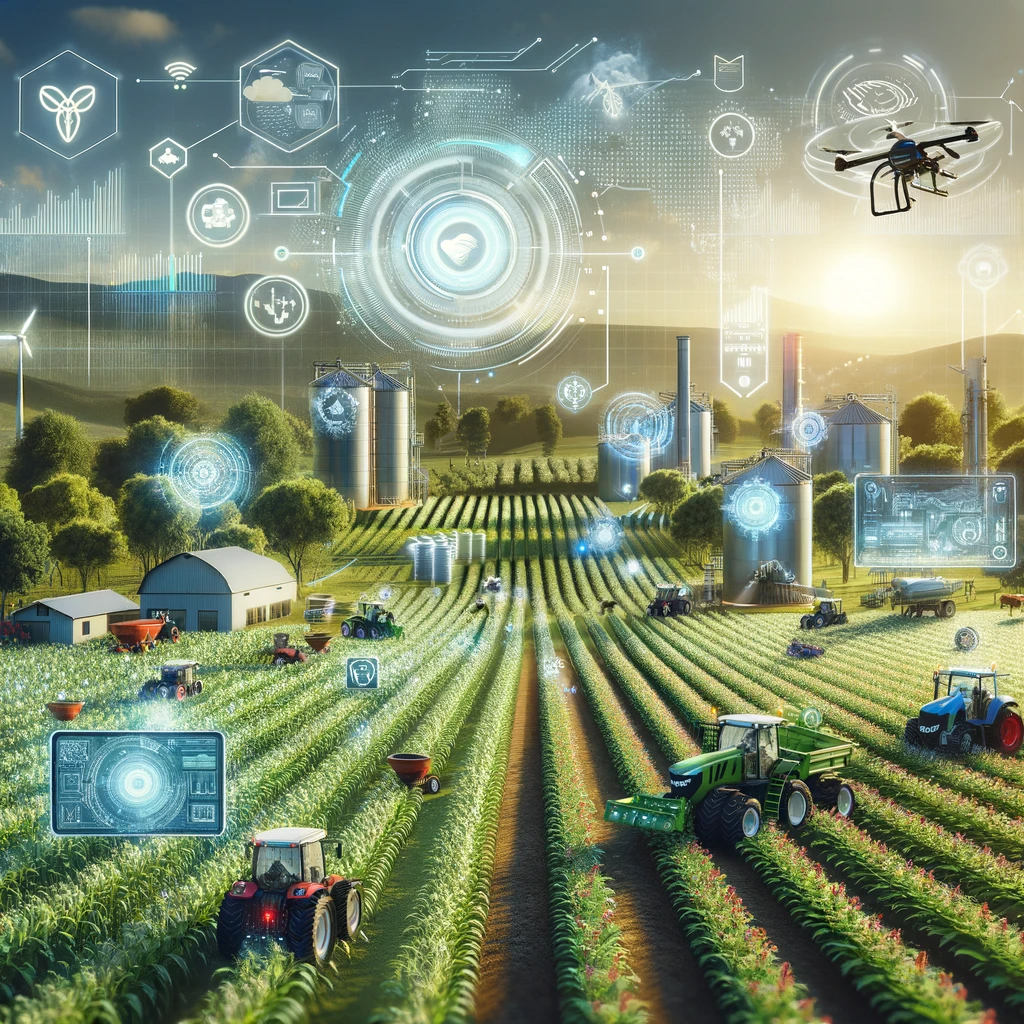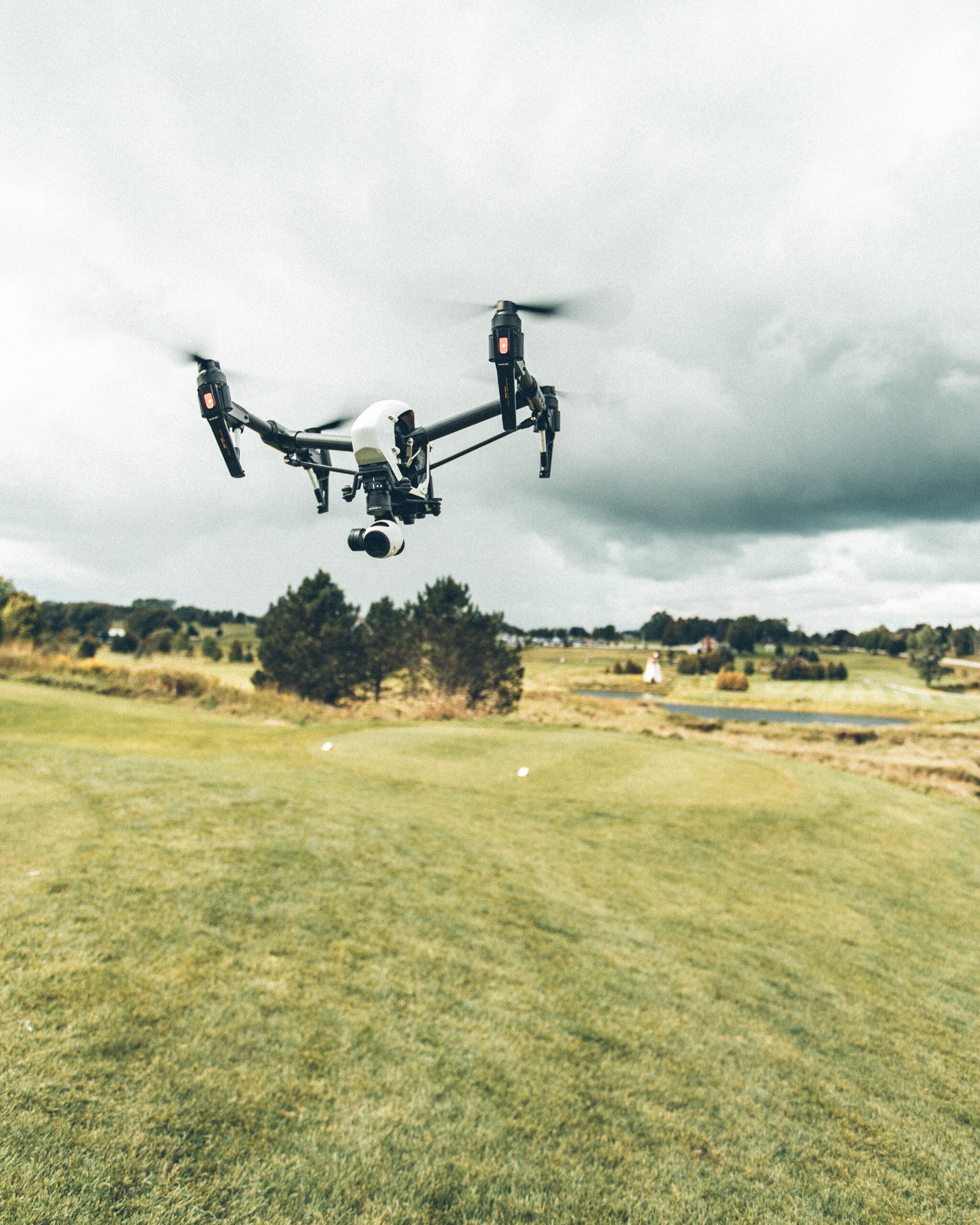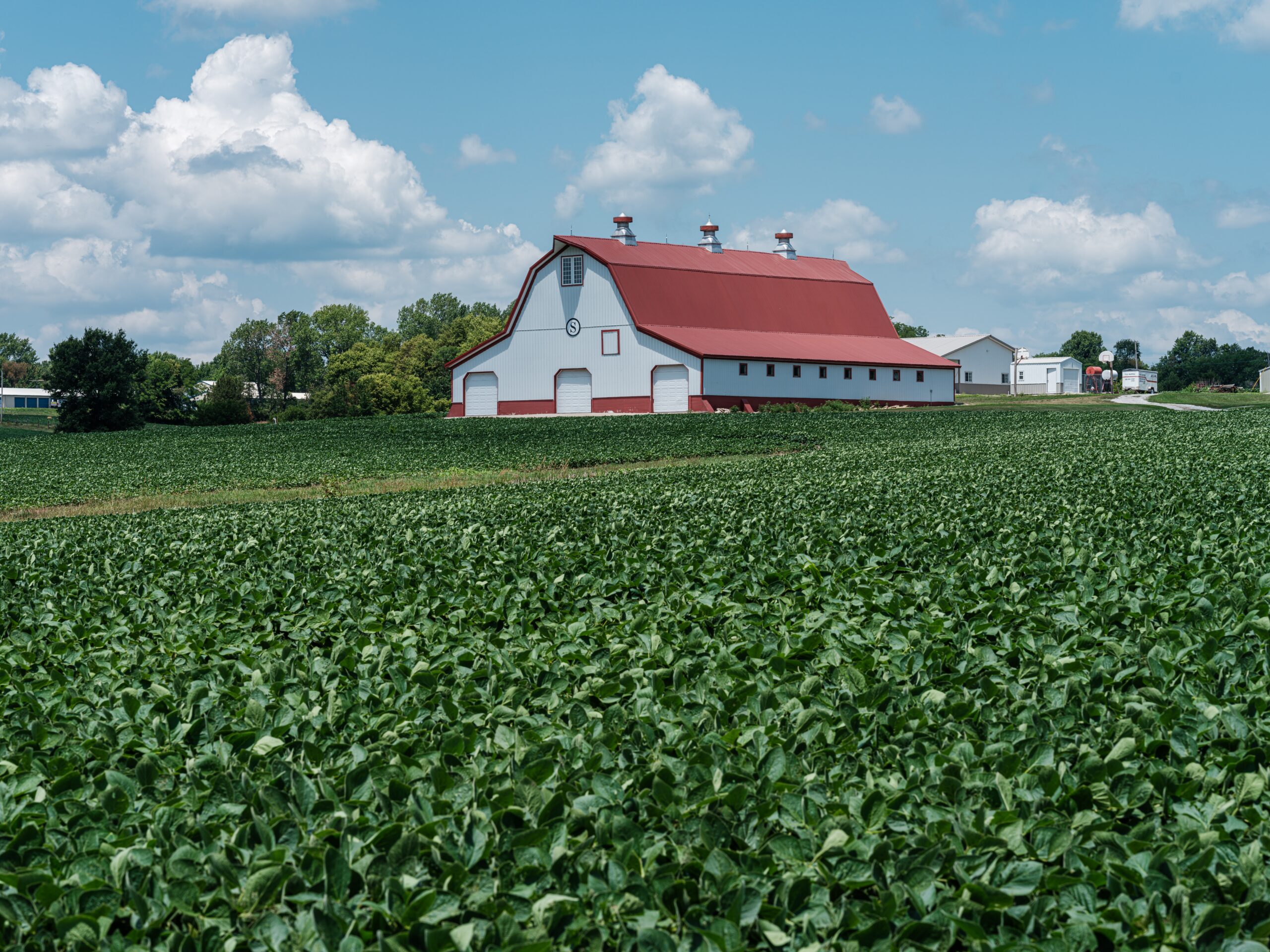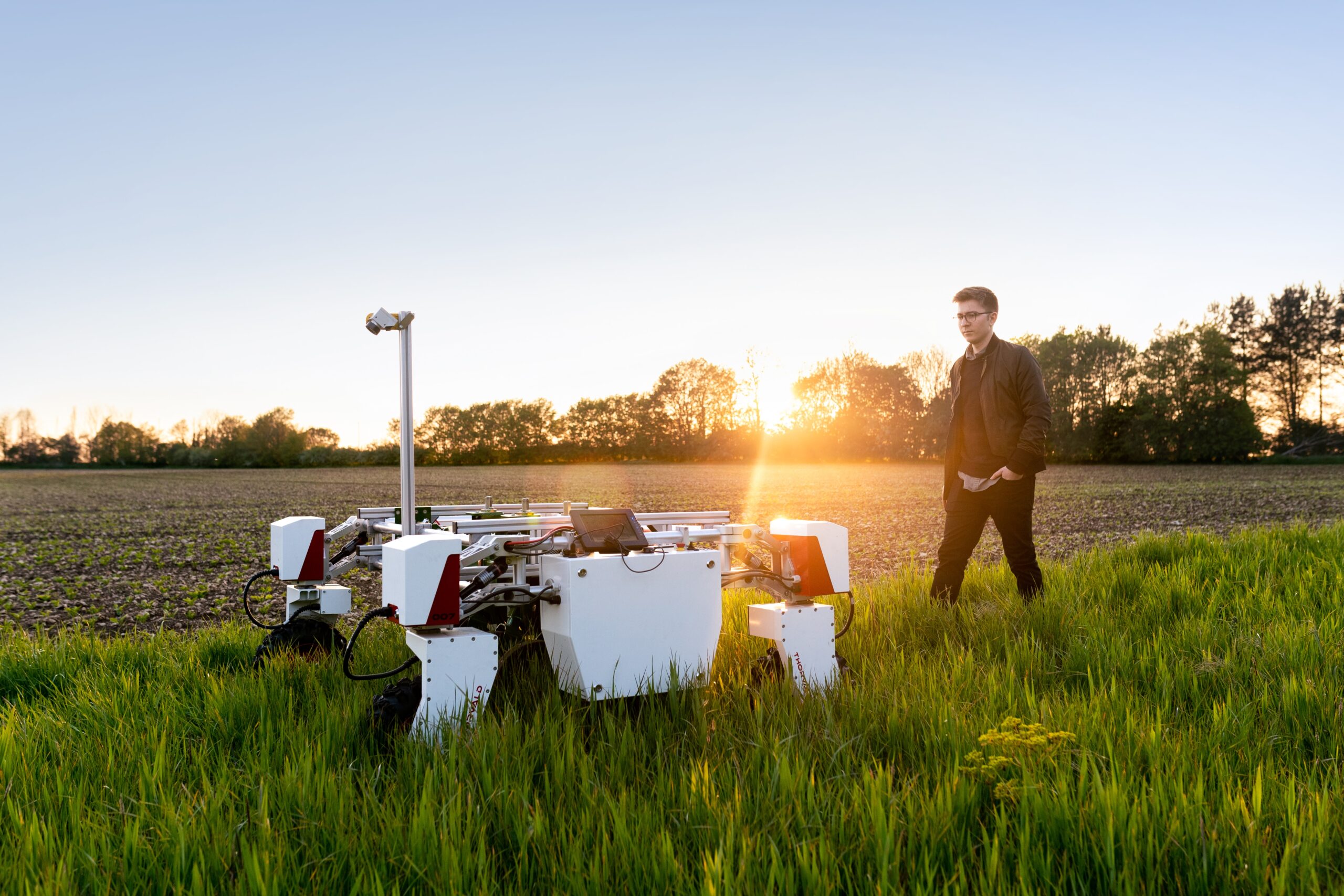Introduction
In an era dominated by the explosion of big data, its profound impact across various sectors is unmistakably transformative. Among these sectors, the realm of agriculture notably emerges as a standout beneficiary, embracing the revolution of Data-Driven Agriculture. This shift leverages the power of data analytics to revolutionize traditional practices, marking a significant stride in the agricultural industry.
In this era of technological wonders, the shift towards Data-Driven Agriculture is more than just an adoption of new tech; it’s a profound transformation in the core approach of the agricultural sector. This change delves deep, reshaping how we view and achieve productivity, efficiency, and sustainability in farming.
In this article, we’re set to explore the depths and breadths of how Data-Driven Agriculture is revolutionizing the agricultural field. It’s not merely changing the game; it’s redefining the playing field, transforming lofty goals like efficiency, productivity, and sustainability into achievable, concrete results in this new, data-empowered age.
As we navigate the layers of this remarkable transformation, we’ll shed light on how Data-Driven Agriculture is not just refining the old ways of farming. It’s carving out pathways for groundbreaking practices, practices that promise not just to change but to wholly redefine the future contours of agriculture.

The Emergence of Data-Driven Agriculture
The rise of Analytical Farming signifies a profound transformation in agricultural methodologies, fueled by advancements in modern technology and the growing accessibility of vast data sources. This evolution is a hallmark of Data-Driven Agriculture.
The journey of Data-Driven Agriculture marks a significant turning point, veering away from the traditional, intuition-based methods that have long been the backbone of the sector. We’re stepping into an era where decisions in agriculture are increasingly guided by analytics and evidence, rather than just gut feeling and generational wisdom.
This transformative phase in Data-Driven Agriculture is fueled by the melding of advanced technologies with vast troves of data. This powerful combination is bringing a new level of finesse and precision to our understanding of farming processes.
In this new age of Data-Driven Agriculture, insights are harvested from an array of sources, ranging from the intricacies of soil composition to the broader strokes of climate patterns, and from the health of individual crops to overarching market trends.
Embracing a scientific methodology anchored in data analytics, Data-Driven Agriculture is empowering farmers and agricultural experts to make decisions that are not only well-informed but also meticulously tailored to the unique requirements of their fields and crops.
This shift is far more than just a technological upgrade. It’s a fundamental transformation in the agricultural narrative, steering us towards Data-Driven Agriculture. This shift acknowledges the intricate challenges of farming and harnesses the power of data to navigate these complexities, leading to farming practices that are not only more efficient and productive but also sustainable.
In essence, we’re witnessing a pivotal moment in agriculture – a paradigm shift towards Data-Driven Agriculture that’s redefining our relationship with the land and our approach to feeding the world.
Here’s a deeper dive into this transformative trend:
Historical Context
- Traditional Farming: Historically, farming decisions were largely based on experience and intuition. While these methods have their merits, they are limited by the inability to precisely understand and react to the nuances of an ever-changing environment. This reliance on traditional knowledge, though valuable, often lacked the precision and adaptability required in the face of dynamic environmental conditions and market demands. The advent of Data-Driven Agriculture marks a significant shift from these traditional methods, offering a more precise and adaptable approach to modern farming challenges.
- Technological Advancements: The surge in computing power, coupled with the widespread availability of the internet and mobile technologies, has opened a new frontier in agricultural data gathering and analysis. This technological leap has heralded the dawn of Precision Farming and Smart Agriculture Technology. In this new age, farming decisions are increasingly driven by real-time data and sophisticated analytics, marking a significant shift from traditional practices to a more data-centric approach. This shift not only enhances the accuracy of farming practices but also opens up avenues for Resource Optimization and Sustainable Farming Methods, meeting the modern demands of efficiency and environmental consciousness in agriculture. The integration of these technologies signifies a major leap from the constraints of traditional farming, paving the way for more informed, data-driven decision-making in agriculture.
For instance, in precision farming, an application of Data-Driven Agriculture, farmers use GPS technology to map fields and accurately apply fertilizers and pesticides. In the Netherlands, the implementation of Data-Driven Agriculture through precision farming has led to a reduction in chemical usage by up to 60% while maintaining the same crop yields.
Core Concepts of Data-Driven Agriculture
- Data Collection: This involves gathering extensive data through various means like soil sensors, drones, satellite imagery, and weather stations.
- Data Analysis: The collected data is then analyzed using advanced algorithms and predictive models to extract meaningful insights.
- Actionable Insights: The key is turning these insights into actionable farming decisions – where to plant, what to plant when to irrigate, fertilize, and harvest.
Key Technologies and Applications
- Sensors and IoT Devices: These are used for real-time monitoring of soil moisture, nutrient levels, and other environmental factors.
- Satellite Imagery and Remote Sensing: These tools provide a broader view of agricultural lands, helping in assessing crop health, soil conditions, and resource use.
In Kenya, farmers utilize satellite imagery to monitor crop health. This technology identifies areas affected by disease, allowing for quick intervention, which has led to a reduction in crop losses by up to 15%.
- Drones: Drones are increasingly used for detailed field analysis, pest monitoring, and even for spraying pesticides or fertilizers.
- Big Data and Predictive Analytics: By analyzing large datasets, farmers can forecast yields, predict weather patterns, and make informed decisions about crop management.
- Machine Learning and AI: These technologies help in pattern recognition and predicting future outcomes based on historical data.
Consider the use of IoT in moisture sensors. These sensors, deployed throughout a farm in Brazil, provide real-time soil moisture data, enabling farmers to optimize irrigation schedules, and reducing water usage by up to 30%.
Benefits
- Increased Crop Yields: By making more informed decisions, farmers can significantly increase their crop yields.
- Resource Efficiency: Precise application of water, fertilizers, and pesticides leads to more efficient use of these resources and reduces costs.
- Environmental Sustainability: Data-driven agriculture supports sustainable practices by minimizing waste and the overuse of chemicals.
- Risk Reduction: Predictive analytics help in anticipating and mitigating risks related to weather, pests, and diseases.
Challenges and Future Directions
- Digital Divide: There’s a gap between those who have access to these technologies and those who do not, particularly in developing countries.
- Data Management and Analysis Skills: Farmers need the skills to manage and interpret complex data sets, which requires training and education.
- Privacy and Data Security: With the increase in data collection, concerns around data privacy and security are also rising.
- Future Innovations: Ongoing innovations in AI, machine learning, and sensor technology continue to push the boundaries of what’s possible in data-driven agriculture.
Key Areas of Impact
The integration of data analytics into agriculture has led to significant impacts in several key areas, fundamentally altering how farming is approached and managed. These key areas of impact are:
1. Precision Farming
- Individualized Crop Management: Utilizing data from various sources, farmers can tailor their practices to the specific needs of different sections of their fields, leading to more efficient use of resources and higher yields.
- Technology Integration: The use of GPS, sensors, drones, and other technologies allows for detailed monitoring and management of crop health, soil conditions, and environmental factors.
2. Yield Prediction and Management
- Forecasting Models: Advanced data analytics enable farmers to predict crop yields more accurately, which aids in planning and resource allocation.
- Risk Mitigation: With better predictions, farmers can prepare for potential adverse conditions, thereby reducing the risks associated with crop failures.
In the realm of Data-Driven Agriculture, countries like India are exploring the use of machine-learning models to enhance crop yield predictions. By analyzing historical and real-time agricultural data, these models are increasingly being employed to provide farmers with actionable insights. Such technological advancements aid in determining optimal planting and harvesting times, potentially leading to significant improvements in crop yields. While specific data on yield increase percentages may vary, the overarching goal is to leverage machine learning to make agriculture more efficient and productive.
3. Resource Optimization
- Efficient Use of Water and Fertilizers: Data-driven insights help in applying the right amount of water and fertilizers, reducing waste and environmental impact.
- Cost Reduction: By optimizing the use of resources, farmers can lower operational costs and increase profit margins.
4. Pest and Disease Control
- Early Detection: Data analytics can predict and identify pest and disease outbreaks before they become widespread, allowing for timely intervention.
- Targeted Treatment: Instead of broad-spectrum pesticide use, data enables farmers to apply treatments only where needed, reducing chemical use and preserving beneficial organisms in the ecosystem.
A notable example of AI’s role in pest control is the project by WAINS, a technology startup that combines IoT and AI-based image recognition to create a digital early warning system for pest controllers. This approach identifies pests before they can proliferate, contributing to more targeted use of biocides and greater efficiency. WAINS’ system uses a database of insect taxonomies to automatically detect and classify captured pests, alerting the user immediately. This innovative solution demonstrates the potential of AI in revolutionizing pest control, aiming toward fewer biocides and enhanced sustainability
5. Supply Chain Efficiency
- Product Tracking: Data analytics aids in tracking agricultural products from farm to consumer, enhancing transparency and efficiency.
- Demand Prediction: Predictive analytics helps in understanding market trends and consumer demands, allowing for better inventory management and reduced waste.
6. Climate Impact and Sustainability
- Adaptation Strategies: By analyzing climate data, farmers can adapt their practices to changing environmental conditions, such as altered rainfall patterns or temperatures.
- Sustainable Practices: Data-driven agriculture promotes practices that are more sustainable, reducing the carbon footprint and conserving biodiversity.
Challenges in Implementing Data-Driven Agriculture
- Accessibility and Affordability: The high cost and complexity of advanced technologies can be prohibitive, especially for small-scale farmers.
- Skill Gaps: There is a need for training and education to equip farmers with the skills to effectively use and interpret data.
- Data Privacy and Security: As with any data-driven industry, ensuring the privacy and security of agricultural data is crucial.
Okay, let’s jump right in and explore the challenges and potential solutions
Getting data analytics into the mix with farming is seriously revolutionary. It’s changing the whole farming game from the ground up!
The transformation to Data-Driven Agriculture is revolutionizing the very essence of crop management and agricultural operations. In this evolving paradigm, the focus is firmly on leveraging the vast capabilities of Big Data and Predictive Analytics. This approach is a significant shift from conventional methods, steering towards a strategy that places data at the heart of decision-making in agriculture.
But, this big change also comes with its own set of tricky challenges. We need to tackle these carefully if we want to make the most of this new approach.
Navigating these complexities with care and precision is essential. Successfully overcoming these hurdles is critical not just for implementing these cutting-edge technologies effectively but also for fully realizing the extensive range of benefits that Smart Agriculture Technology can bring to the table.
This integration process involves marrying cutting-edge technological solutions with traditional agricultural practices, a task that requires balancing innovation with practicality. Farmers and agriculturalists are now exploring the intersections of Farm Data Management and conventional farming techniques, seeking to enhance productivity and sustainability.
The road to implementing Data-Driven Agriculture is strewn with a diverse set of challenges, spanning from technical and financial hurdles to educational and infrastructural barriers. A prime example of these obstacles is the steep cost associated with rolling out advanced Farm Management Software and analytical tools.
The costs associated with advanced agricultural technologies can be particularly overwhelming for smaller farms or those in developing areas, where financial resources are typically more constrained.
Moreover, the intricate nature of these technologies requires a degree of digital literacy and specialized skills. Such expertise may not be readily available to many within the agricultural sector, presenting yet another hurdle to the widespread adoption of these innovations.
Bridging this Skill Gap in digital and data literacy is crucial for the widespread adoption of these technologies.
Moreover, there are logistical hurdles such as ensuring consistent and reliable internet connectivity in rural and remote farming areas, essential for IoT in Farming, and real-time data transmission and analysis.
There are also important considerations regarding data privacy and security, as the increasing digitization of farm data opens up new vulnerabilities. Establishing robust Data Privacy and Security measures is key to protecting sensitive agricultural data.
Tackling these challenges necessitates a collaborative and multifaceted strategy. It’s about creating synergies between government bodies and the agricultural industry to potentially offer subsidies, making technological advancements more accessible to smaller farms. Also, it’s super important to set up thorough training programs. These would be key in boosting digital know-how and data-handling skills for farmers. This way, they’re fully geared up to succeed in this era of Data-Driven Agriculture.
Infrastructure development in rural areas to improve connectivity, alongside robust data protection policies, will also play a critical role in this transition.
The ultimate aim of these concerted efforts is to cultivate an agricultural landscape where the integration of data analytics transcends being merely an advantage for large or technologically sophisticated farms. Instead, it becomes a universal asset, uplifting and transforming the entire industry.
By achieving this, the true potential of Data-Driven Agriculture can be unlocked, paving the way toward an agricultural future that is not only more efficient and sustainable but also markedly more productive.
Here’s an overview of some of the primary challenges and potential solutions:
Challenges in Data-Driven Agriculture
-
High Cost and Accessibility
- Challenge: Advanced technologies and data analytics tools can be expensive and out of reach for many small-scale farmers.
- Solution: Governments and agricultural organizations can provide subsidies, grants, or low-interest loans to make technology more affordable. Additionally, developing cost-effective technologies tailored for small-scale farmers can also help bridge this gap.
-
Complexity and Skill Gap
- Challenge: Many farmers may lack the technical skills required to implement and make the most of data analytics.
- Solution: Offering training programs and easy-to-use tools with strong customer support can help. Educational initiatives aimed at integrating data literacy into agricultural education are also vital.
-
Data Management and Analysis Skills
- Challenge: Handling the vast amounts of data generated and extracting meaningful insights requires specific expertise.
- Solution: Collaboration with data science experts and agronomists can provide the necessary skills. The development of user-friendly data management systems that simplify analysis can also be beneficial.
-
Connectivity Issues in Rural Areas
- Challenge: Many rural areas, where much of farming takes place, suffer from poor internet connectivity, hindering the use of cloud-based analytics tools.
- Solution: Investment in rural internet infrastructure is key. Additionally, developing offline solutions or low-bandwidth-required tools can mitigate this issue.
-
Data Privacy and Security Concerns
- Challenge: Farmers may be hesitant to adopt digital tools due to concerns about data privacy and security.
- Solution: Implementing robust data security measures and transparent data policies can help build trust. Educating farmers about data rights and security practices is also crucial.
-
Integration with Existing Practices
- Challenge: Integrating new technologies with existing agricultural practices can be difficult.
- Solution: Designing solutions that are compatible with existing equipment and practices, and providing personalized advice for integration can ease this transition.





